We will never get tired of wandering through the streets of Seoul, taking in all the heady bars and strings of cafés that occupy the charming neighbourhoods. That said, a glimpse of South Korea’s rich and glorious heritage is worth digging a little deeper to find.
When it comes to enjoying this country’s storied past, you simply cannot squeeze everything into one trip. So, even though South Korea has a total of 14 UNESCO World Heritage Sites, we’ve gathered some of the most popular destinations that will give you a headstart. Travel back in time with these ancestral palaces, shrines, temples, and natural landscapes below!
Ancient palaces, temples, and shrines in South Korea
1. Changdeokgung Palace Complex (1997)
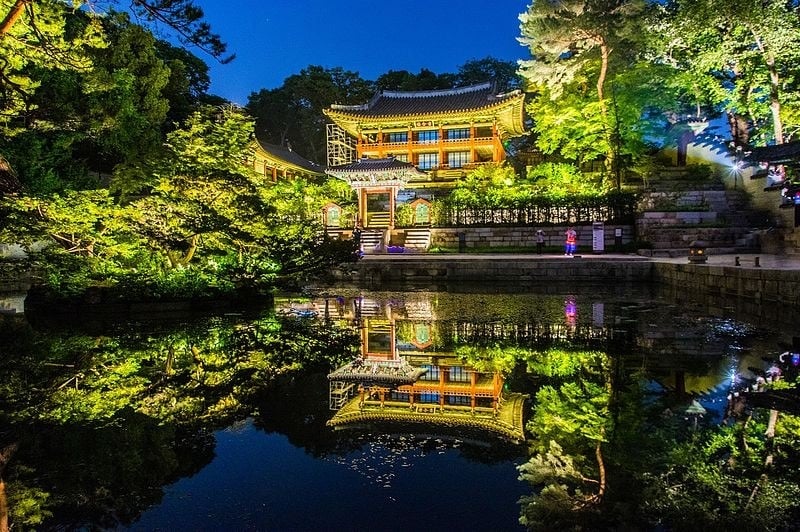
Changdeokgung Palace Complex | Image credit: Goodbye4ever
Travellers looking to escape the frenetic pace of the capital city will be astonished by the Changdeokgung Palace Complex in Waryong-dong, Jongno-gu. One of the five grand palaces of the Joseon period, the palace has retained much of its original structures, such as Donhwamun Gate and Injeongjeon Hall.
Changdeokgung Palace functioned as a royal residence along with Gyeongbokgung Palace, until they were both consumed in flames when the Japanese forces invaded South Korea in the Japanese Invasion of Korea in 1592. Today, the restored palace can be witnessed in its full glory.
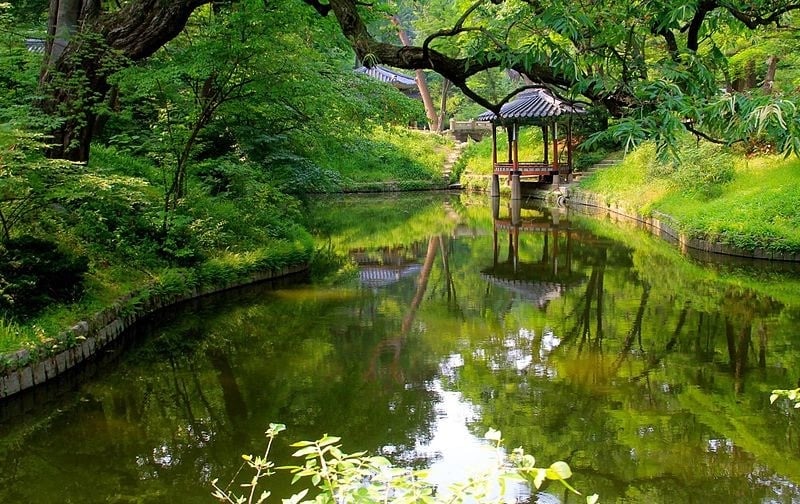
Huwon at Changdeokgung Palace Complex | Image credit: Joycekim77
Equally stunning within Changdeokgung Palace Complex is Huwon or the Secret Garden, a peaceful garden filled with stone pavilions, bridges, lotus ponds, fountains, and bountiful flowers. Be sure to visit the garden in spring or autumn, when the foliage is at its most breathtaking.
Also read: 9 Places to Visit in Korea That Look Even More Stunning in Autumn
2. Bulguksa Temple and Seokguram Grotto (1995)
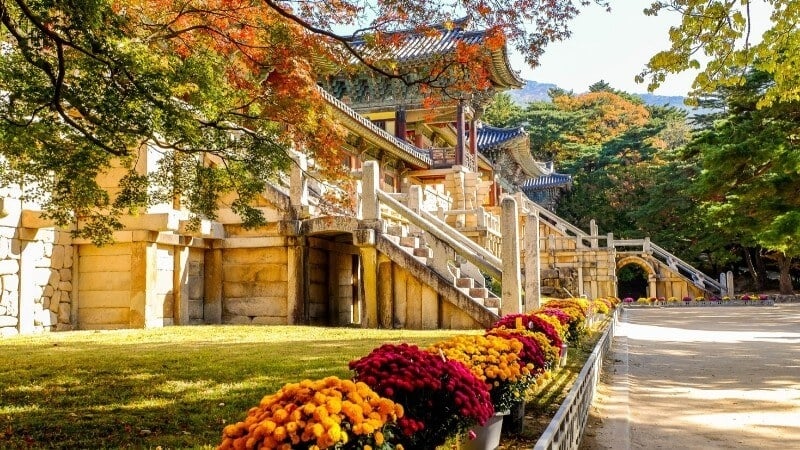
Bulguksa Temple
One of the most popular heritage sites in South Korea is the Bulguksa Temple, which qualified for UNESCO’s prestigious list in 1995. Established in the golden era of the Silla Kingdom, this ornate Buddhist temple holds as many as seven Korean National Treasures, including Cheongungyo Bridge and the Sakyamuni Pagoda.
Another part of the temple complex is the Seokguram Grotto, where you can find a granite cave temple with a statue of Buddha, surrounded by stone statues of his disciples. Outside the temple, visitors can admire the iris ponds and lush forested areas near Gyeongju, North Gyeongsang.
3. Hwaseong Fortress (1997)
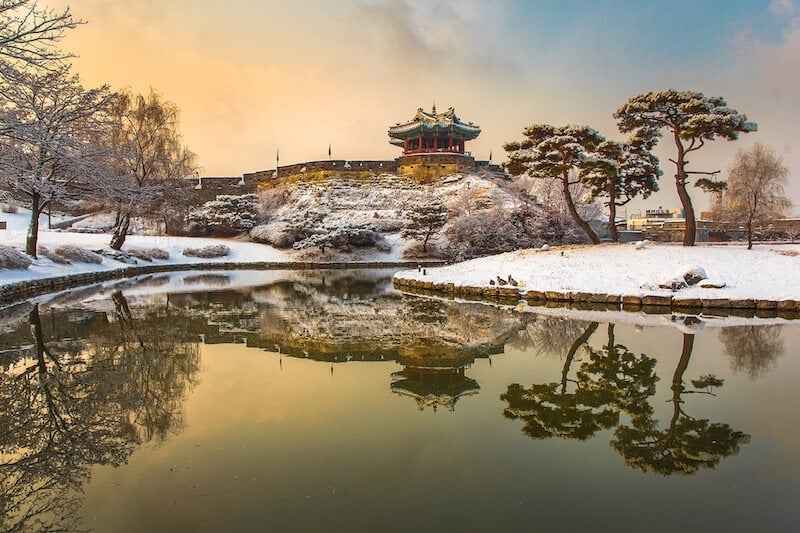
Hwaseong Fortress | Image credit: Seungh
No visit to South Korea is complete without a tour of Hwaseong Fortress, a shining example of military architecture in Asia. This stone-and-brick fortress in Suwon City, Gyeonggi-do stands out in the UNESCO World Heritage list for its many striking defensive features, which include observation towers, command posts, massive gates, arrow launcher towers, and bunkers that were meant to withstand mighty battles during the Joseon period. Built in the late 18th century, Hwaseong means “brilliant castle” in English.
4. Jongmyo Shrine (1995)
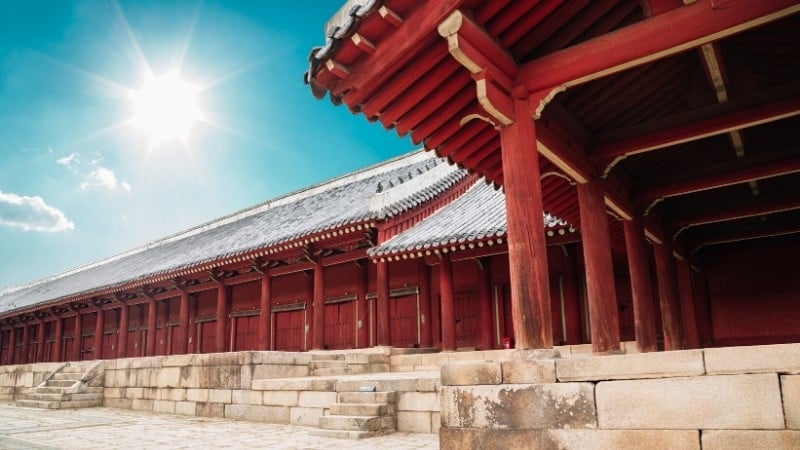
Jongmyo Shrine
Head to Jongmyo Shrine in Hunjeong-dong, Seoul for a historic sanctuary in the midst of a bustling metropolis. Jongmyo Shrine is where the royal spirit tablets of Joseon’s kings and queens are kept, and it upholds a solemn and tranquil ambience for memorial services to this day. The elegant features of this Confucian shrine have remained intact since the 16th century, exhibiting the traditional Korean architectural style of curved eaves and a raised platform.
5. Haeinsa Temple Janggyeong Panjeon, the Depositories for the Tripitaka Koreana Woodblocks (1995)
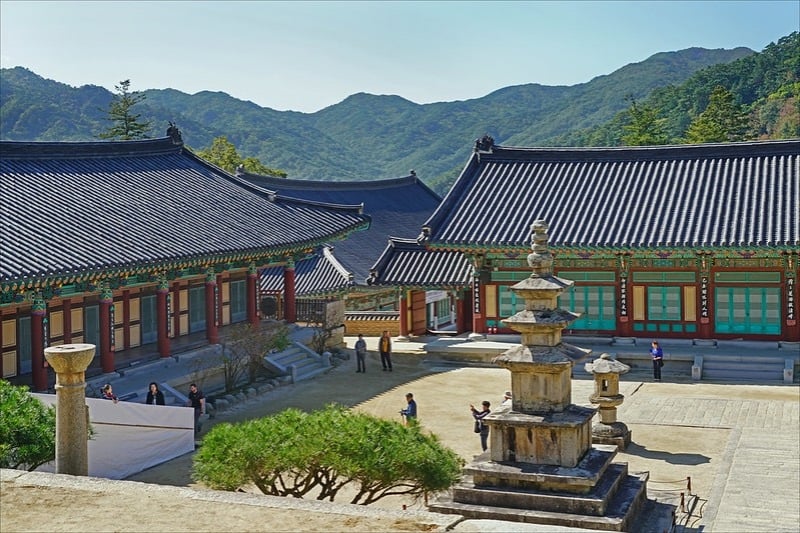
Haeinsa Temple Janggyeong Panjeon | Image credit: Jean-Pierre Dalbéra
Before we delve into its cultural significance, Haeinsa Temple Janggyeong Panjeon, also known as the “Temple of Reflection on a Smooth Sea,” is already a sight for sore eyes, thanks to its magnificent courtyard with a stone pagoda at the centre.
Perched on Mount Gayasan’s gentle slopes, the temple is responsible for preserving the Tripitaka Koreana, an extensive collection of Buddhist texts and teachings engraved onto 81,350 wooden printing blocks. Visitors can enter the 15th-century hall that protects these woodblocks from damage over time.
6. Namhansanseong (2014)
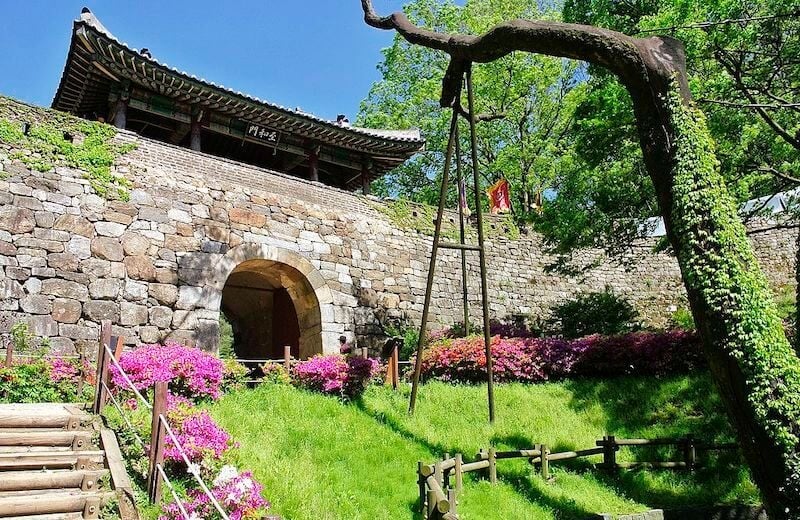
Namhansanseong Fortress | Image credit: Jiang hang
Dedicate a portion of your travels to explore Namhansanseong, a scenic break from the commercial districts of Seoul. This fortress city in Gyeonggi was built as a temporary palace for the royal family during the Joseon period; and even more impressive, it served as a stronghold against the Mongolian army during the Goryeo dynasty. With its high walls and elevated location on Namhan Mountain, one can imagine how difficult it must have been for invaders to get past its defences.
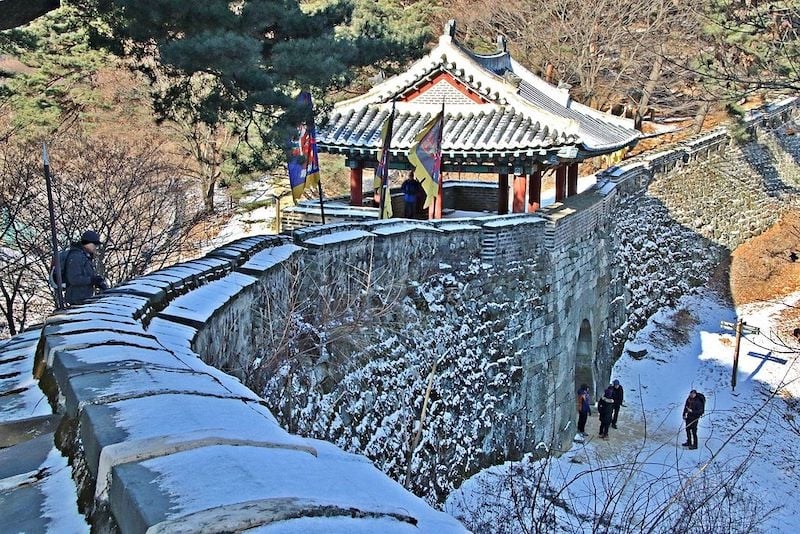
Namhansanseong Fortress | Image credit: Noh Mun Duek
Many Koreans enjoy visiting Namhansanseong for its hiking trails, autumn foliage, and picturesque views along the fortress wall, which overlooks the forested terrain. Within the area are also beautiful shrines and temples, such as Janggyeongsa Temple, Sungryeoljeon Shrine, and Cheongryangdang Shaman Shrine.
Historic areas and villages in South Korea
7. Gyeongju Historic Areas (2000)
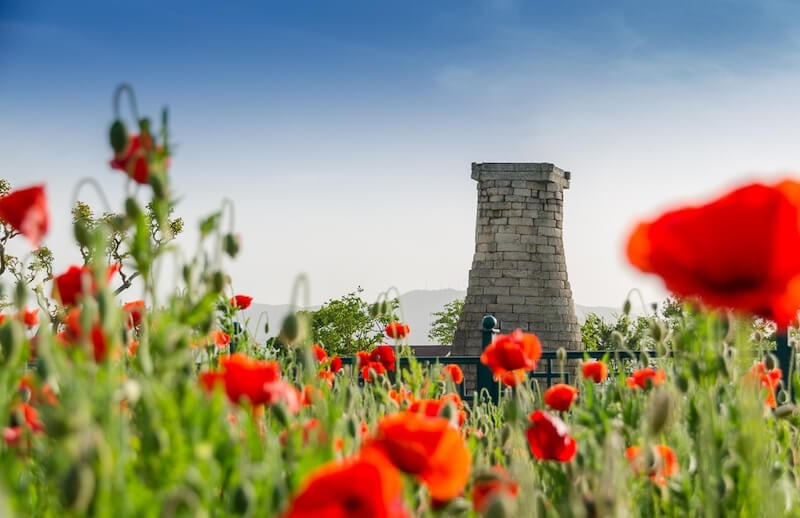
Cheomseongdae Observatory | Image credit: Md Reyazul Islam
Considered by many travellers to be an open-air history museum, the city of Gyeongju was the capital of the Silla Kingdom for nearly a thousand years, making it the oldest kingdom in ancient Korea.
Designated a UNESCO World Heritage Site in 2000, Gyeongju Historic Areas comprises five zones: the Mount Namsan Belt, the Wolseong Belt, the Hwangnyongsa Temple Belt, Tumuli Park Belt, and the Sanseong Fortress Belt. From palace ruins to royal tombs of aristocrats, these areas showcase the grandeur of the Silla Kingdom.
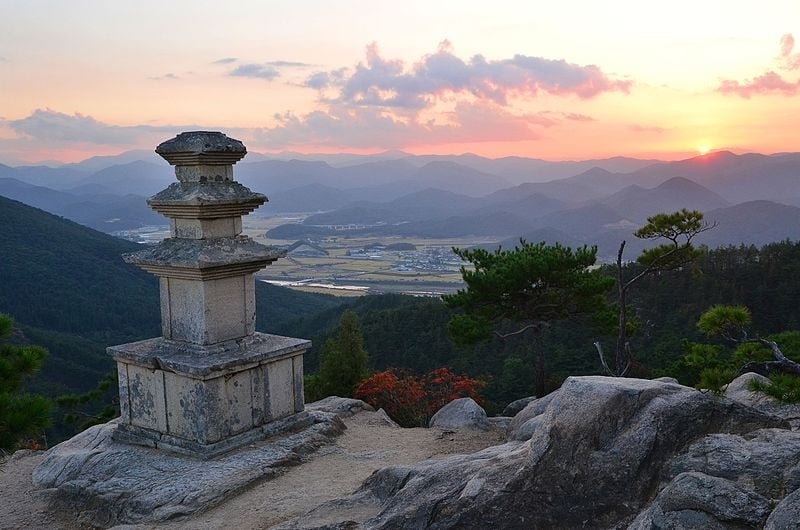
A three-storey pagoda on Mount Namsan | Image credit: Top6bin
Highlights of Gyeongju include the Ancient Tombs in Hwangnam-ri, the Daereungwon Tomb Complex, the Rock-Carved Buddha in Namsan Mountain, Bunhwangsa Temple, Hwangnyongsa Temple, Gyeongju Poseokjeong Pavilion Site, Donggung Palace and Wolji Pond, and Cheomseongdae, the oldest astronomical observatory in East Asia.
Also read: 20 Things to Do in Gyeongju, Korea’s Ancient Capital
8. Baekje Historic Areas (2015)
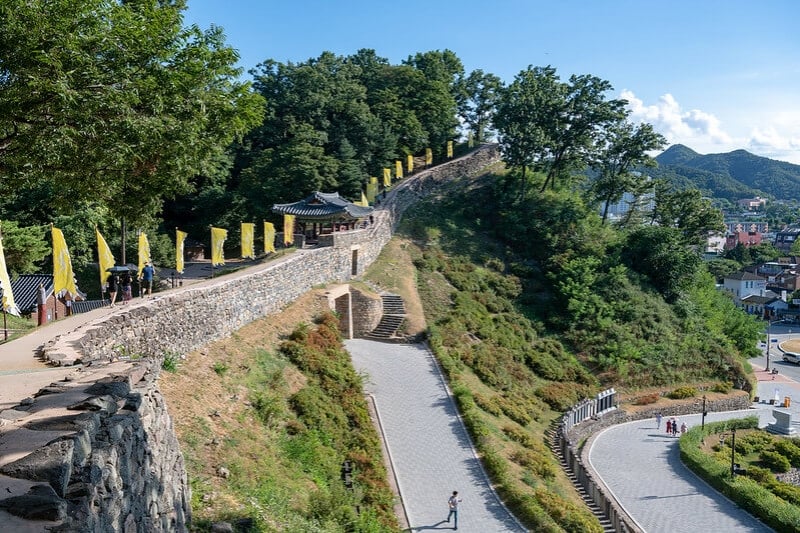
Gongsanseong Fortress | Image credit: xiquinhosilva
Any tourist looking for archaeological wonders and cultural treasures should make a stop for the old ruins of Baekje, which was one of Korea’s three ancient kingdoms. Collectively listed under Baekje Historic Areas, this UNESCO World Heritage Site encompasses three areas in South Korea, along with their noteworthy landmarks:
In Gongju, you can find the Royal Tombs in Songsan-ri and Gongsanseong Fortress.
In Buyeo, the Archaeological Site in Gwanbuk-ri, Busosanseong Fortress, Naseong City Wall, Jeongnimsa Temple Site, and the Royal Tombs in Neungsan-ri.
And finally, in Iksan, the Mireuksa Temple Site and Archaeological Site in Wanggung-ri.
9. Yangdong Village and Hahoe Village (2010)
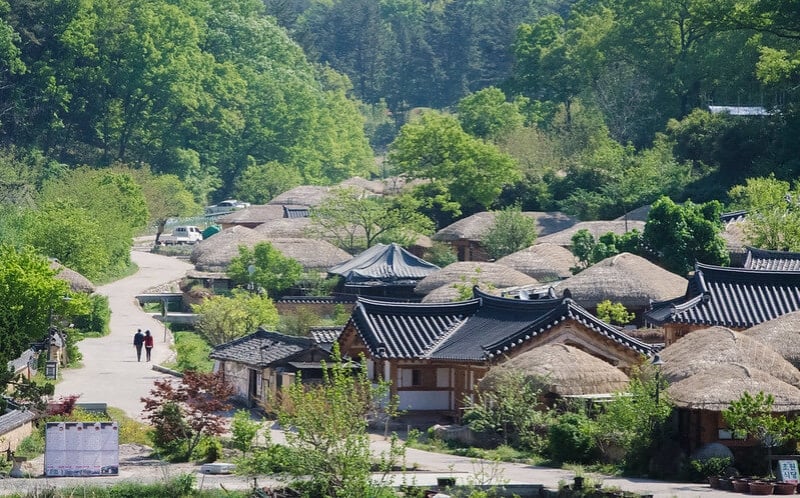
Yangdong Village | Image credit: cotaro70s
If you enjoy walking through the hanok villages of Seoul, then you shouldn’t miss out on Hahoe Village and Yangdong Village! Take a trip through time amidst the tile-roofed houses, stone walls, riverside views, and local delicacies at these folk villages in Gyeongsangbuk-do.
Both of these historic villages are necessary stops to witness the agricultural roots of South Korea and its culture of clan villages, where many of the locals descend from the same ancestral line, and hence, possess similar surnames.
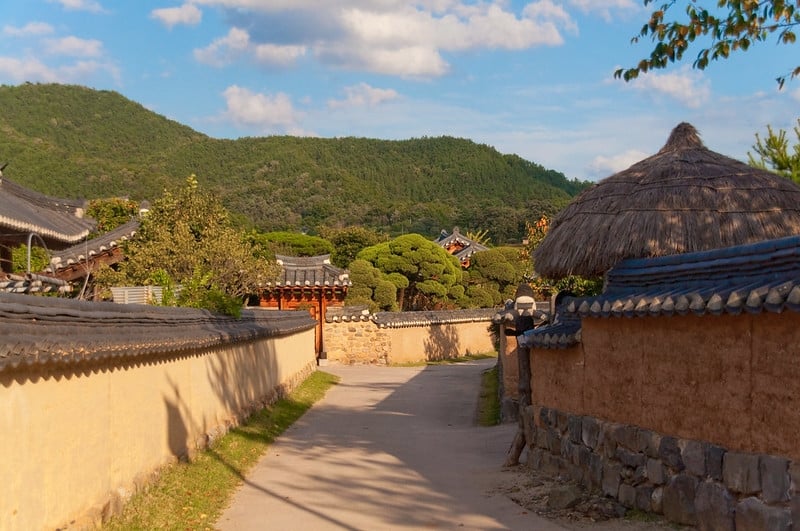
Andong Hahoe Village | Image credit: Jordi Sanchez
Away from the eyes of prying tourists, you’re free to meander around the traditional houses and alleyways of these villages. If you’re lucky, you might even observe the masked dances at Hahoe Village, or watch the Korean women make injeolmi the old-fashioned way, by pounding the rice cake with a wooden mallet.
Natural heritage sites in South Korea
10. Jeju Volcanic Island and Lava Tubes (2007)
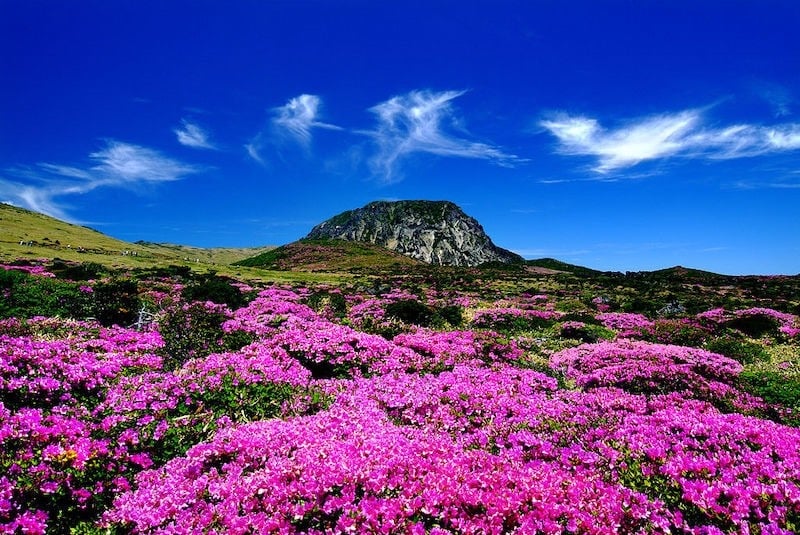
Hallasan Mountain | Image credit: Korean Culture and Information Service
More than a million years ago, a volcanic eruption resulted in the diverse and beautiful landscapes that would eventually make up Jeju Island. Beloved for its unique topography and sightseeing opportunities, Jeju Island was proclaimed a Natural Heritage Site by UNESCO for three major ecological marvels.
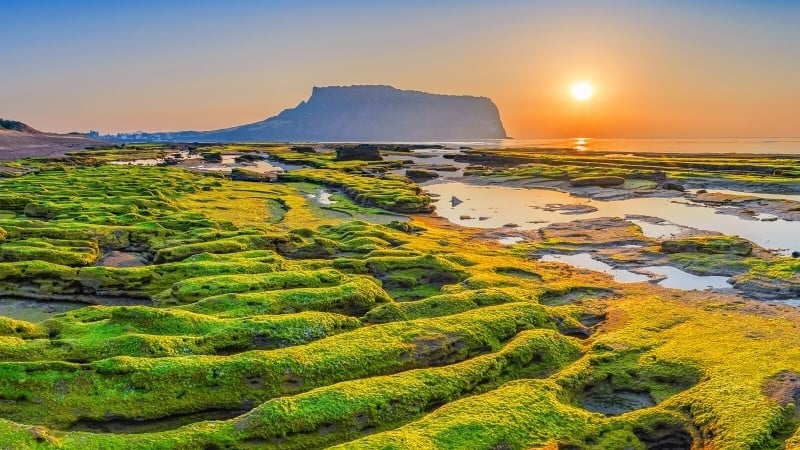
Seongsan Ilchulbong Peak
First among its three ecological marvels, the Geomunoreum Lava Tube System with its intricate ceilings and cavern walls. Second, the Seongsan Ilchulbong Peak with its dramatic volcanic crater jutting from the sea. And third, Hallasan Natural Reserve, where you can find the postcard-worthy sight of Hallasan Mountain, the tallest mountain in South Korea.
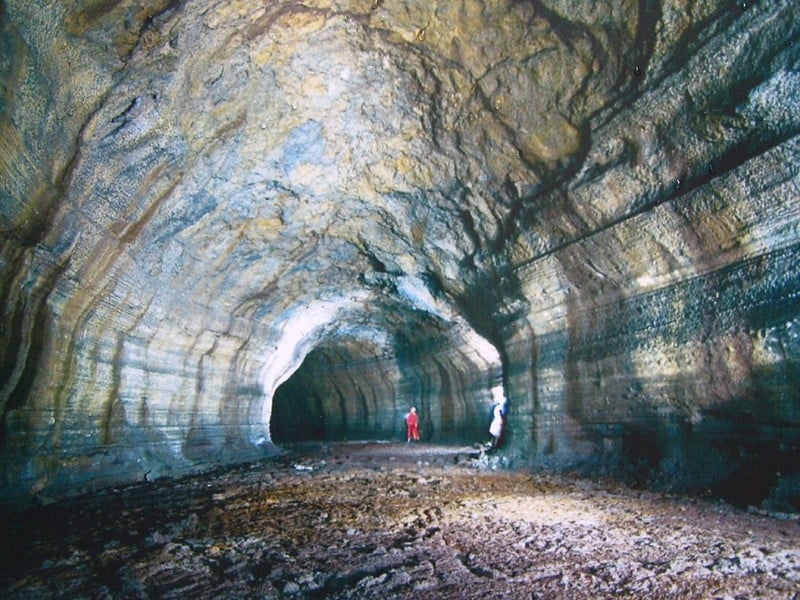
Manjanggul Cave | Image credit: Ianz
Aside from cave formations and seaside cliffs, these are other stunning natural attractions that Jeju Island has to offer visitors: Cheonjeyeon Waterfall, Hallim Park, Spirited Garden, Bijarim Forest, and Hyeopjae Beach, just to name a few.
Also read: 13 Awesome Attractions in Jeju Island You Shouldn’t Miss [Updated 2019]
More than monuments that have stood the test of time, these UNESCO World Heritage Sites give us a new-found appreciation for the culture and history of South Korea. Out of all these magnificent wonders, which one caught your eye today?




